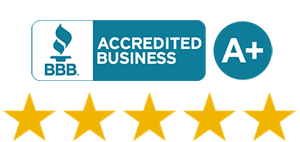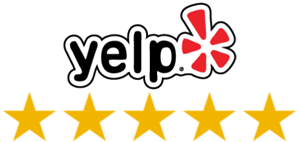Living in a house with mold can be a cause for concern. Mold-infested homes pose safety concerns and health risks that can impact your well-being. Are you aware of the potential dangers associated with mold exposure? Do you know how to ensure the safety of your family and yourself? Let’s explore the hazards of living with mold and discover the steps you can take to protect your home and loved ones.
Key Takeaways:
- Mold exposure in homes can lead to respiratory problems, allergies, and other health issues.
- Identifying visible and hidden mold in your home is crucial for taking the necessary actions.
- Professional mold remediation is recommended for effectively eliminating mold problems.
- Taking preventive measures can help reduce the risk of mold growth in your living environment.
- Understanding your legal rights and insurance coverage regarding mold is important.
The Health Risks Associated with Mold Exposure
Mold can have detrimental effects on respiratory health, leading to issues such as coughing, wheezing, and exacerbating conditions like asthma and allergies. Mold spores in the air can be inhaled, triggering respiratory symptoms and causing discomfort for individuals with existing lung problems. According to the EPA, exposure to mold can irritate the airways and even result in asthma attacks.
In addition to respiratory issues, mold exposure can also manifest as allergies. Certain individuals may develop mold allergies, experiencing symptoms such as itchy eyes, sneezing, skin rashes, and other allergic reactions. The American Academy of Allergy, Asthma & Immunology (AAAAI) suggests that exposure to specific types of mold can trigger these allergic responses.
Moreover, mold can produce mycotoxins, which are toxic substances harmful to human health. Prolonged exposure to mycotoxins, particularly from certain types of toxic mold like black mold (Stachybotrys chartarum), can lead to a range of health issues. Neurological problems and immune system suppression are among the potential consequences of mycotoxin exposure. The World Health Organization (WHO) highlights the dangers of mycotoxins and emphasizes the importance of taking professional remediation measures when dealing with toxic mold.
Identifying Mold in Your Home
Identifying mold in your home is essential for taking appropriate action. Visible signs of mold, such as discoloration on surfaces or a musty odor, can indicate the presence of an underlying mold problem. These visible indicators serve as a visual cue for homeowners to investigate further and address the issue before it worsens.
This section will guide readers on how to visually identify mold growth in different areas of the house, including common mold-prone areas like bathrooms, basements, and kitchens. By being aware of the appearance and smell of mold, individuals can promptly detect and address mold growth, mitigating potential health risks.
Mold can sometimes be hidden from plain sight, making it crucial to be aware of potential hiding spots. Mold can grow behind walls, in HVAC systems, and other concealed areas without immediate visibility. Even though mold is not visible, it can still pose health risks to occupants. Therefore, understanding where mold commonly hides and the contributing moisture sources is essential to effectively address the problem.
When it comes to locating hidden mold, homeowners should be mindful of signs such as persistent water leaks, damp areas, or areas with a history of moisture problems. This section will provide insights into identifying and addressing mold behind walls, in HVAC systems, and other concealed areas. By understanding the underlying causes of mold growth and detecting hidden mold, individuals can take the necessary steps to remediate the issue and prevent further proliferation.
Testing for mold is an important step in assessing its presence and severity. This can be done through DIY mold testing kits or professional mold inspection. DIY kits are readily available and can provide quick results, allowing homeowners to gain initial insights into the presence of mold in their homes. However, it’s important to note that DIY kits may have limitations in terms of accuracy and comprehensiveness.
In cases where the mold problem is severe, or if individuals want a comprehensive evaluation of the mold presence in their homes, consulting a professional mold inspector is advisable. Professional mold inspections provide a thorough assessment of the extent of mold growth, including hidden mold that may not be visible to the naked eye. This ensures a comprehensive understanding of the mold situation and allows for proper remediation.
By understanding how to visually identify mold growth, locating hidden mold, and opting for appropriate mold testing methods, homeowners can effectively address mold issues in their homes and ensure a healthier living environment.
Is it safe to live in a house with mold?
Living in a house with mold can pose significant health hazards and safety concerns. The risks of mold exposure are not to be taken lightly, as they can have detrimental effects on residents’ well-being. Understanding these hazards and taking prompt action is essential for maintaining a safe living environment.
Exposure to mold can lead to a variety of health issues, ranging from mild allergies to more severe respiratory problems. Individuals living in mold-infested homes may experience symptoms such as coughing, wheezing, asthma exacerbation, itchy eyes, skin rashes, and allergic reactions. Prolonged exposure to certain types of mold, such as toxic black mold, can even cause neurological problems and suppression of the immune system.
It is crucial to address mold issues promptly to avoid further health risks. Mold can release spores and mycotoxins into the air, which can easily spread throughout the house and exacerbate existing health problems. The longer mold is left unaddressed, the greater the potential for health complications.
Furthermore, living in a mold-infested environment can be particularly dangerous for individuals with weakened immune systems, respiratory conditions, or allergies. It is important to create a safe and healthy living space, free from residential mold hazards.
By understanding the health hazards of living with mold and prioritizing safety concerns, residents can take the necessary steps to mitigate risks and ensure their well-being. Seeking professional assistance for mold remediation and implementing preventive measures is vital in creating a mold-free and healthy home environment.
Remediation and Prevention Strategies
When dealing with mold problems in your home, there are two main approaches to consider: professional mold remediation and do-it-yourself (DIY) mold removal. Both methods have their merits and require different safety precautions. Let’s explore the details of each approach.
Professional Mold Remediation
Professional mold remediation involves engaging certified mold specialists who have the expertise and tools to assess and eliminate mold problems in your home. It is essential to hire reputable companies with a track record of successful mold cleanup. These professionals follow strict guidelines to ensure thorough removal and cleanup of mold.
The process of professional mold remediation typically includes the following steps:
- Inspection and assessment: Certified mold specialists conduct a thorough inspection of your property to identify the extent of the mold infestation and determine the best course of action.
- Containment: Proper containment measures are put in place to prevent the spread of mold spores to unaffected areas of the home.
- Removal and cleanup: The mold-affected materials are safely removed and disposed of. The affected areas are thoroughly cleaned and treated to eliminate any remaining mold spores.
- Prevention: Certified mold specialists provide recommendations for preventing future mold growth, including addressing moisture issues and improving ventilation.
By opting for professional mold remediation, you can have peace of mind knowing that experts are taking care of the problem using effective and safe methods. Their knowledge and experience ensure a thorough and long-lasting solution.
DIY Mold Removal
If you decide to address mold issues yourself, it is vital to follow proper safety precautions to protect yourself and prevent further contamination. DIY mold removal is suitable for smaller areas of mold growth, such as mold on bathroom tiles or small patches on walls.
Here are some considerations and safety precautions for DIY mold removal:
- Effective cleaning methods: Use appropriate cleaning solutions, such as a mixture of water and detergent or a hydrogen peroxide solution, to remove the mold. Scrub the affected area gently to avoid dispersing mold spores into the air.
- Protective gear: Wear protective gear, including gloves, goggles, and a respirator mask, to minimize exposure to mold spores.
- Ventilation: Ensure proper ventilation by opening windows and using fans to circulate fresh air during the mold removal process.
However, it is important to note that DIY mold removal may not be suitable for extensive mold infestations or hidden mold behind walls. In such cases, it is advisable to consult professional mold remediation experts to ensure a thorough assessment and effective cleanup.
Mold Prevention
Taking proactive steps to prevent mold growth is key to maintaining a safe and healthy home environment. Here are some important preventive measures:
- Moisture control: Address any sources of moisture in your home, such as leaks or condensation. Fix plumbing issues promptly and use dehumidifiers in areas prone to high humidity.
- Ventilation: Ensure proper ventilation in your home to reduce excess moisture. Use exhaust fans in bathrooms and kitchens, open windows when weather permits, and consider installing ventilation systems in areas with poor airflow.
- Maintain humidity levels: Keep indoor humidity levels below 60% to prevent mold growth. Use a hygrometer to monitor humidity and utilize humidifiers or dehumidifiers as needed.
By implementing these preventive measures, you can minimize the risk of mold growth and maintain a mold-free living space.
Legal and Insurance Considerations
Mold in rental properties raises legal considerations, with both landlords and tenants having specific rights and responsibilities. Landlords are responsible for addressing mold issues and ensuring that the rental property is safe and habitable for tenants. They must take appropriate measures to prevent and remediate mold growth to protect the health and well-being of their tenants.
Tenants, on the other hand, have the right to a safe and habitable living environment, free from mold-related hazards. They have the right to request mold inspections and prompt remediation if mold is discovered in the rental property. If landlords fail to address mold issues, tenants may have the right to terminate the lease or take legal action to enforce their rights.
Additionally, there are disclosure laws and regulations related to mold in rental properties that both landlords and tenants should be aware of. These laws vary by state and may require landlords to disclose information about previous mold problems or known mold hazards in the property. Tenants should familiarize themselves with these laws to ensure their rights are protected.
Homeowners Insurance and Mold Coverage
When it comes to homeowners insurance, coverage for mold damage can vary. Some insurance policies may include mold-related coverage, while others may have limitations or exclusions. It is important for homeowners to review their insurance policy to understand the extent of their mold coverage.
Homeowners insurance policies typically cover mold damage that is the result of a covered peril, such as a burst pipe or water damage from a storm. However, coverage for mold growth that is a result of long-term moisture or neglect may be excluded. Policyholders should carefully review their policy to determine the specific coverage and any limitations or exclusions related to mold.
Filing Insurance Claims for Mold-Related Damage
If mold damage is covered by a homeowners insurance policy, policyholders may need to take certain steps to file an insurance claim. It is important to report the mold damage to the insurance company as soon as possible and document the extent of the damage with photographs and detailed descriptions.
Policyholders may be required to provide evidence of the cause of the mold damage and the efforts taken to mitigate the issue. This may include documentation of repairs or remediation efforts. It is important to follow the insurance company’s guidelines and provide all necessary documentation to support the claim.
However, it is important to note that there may be limitations on the amount of coverage provided for mold damage. Some insurance policies may have policy limits or sub-limits specifically for mold claims. Policyholders should review their policy and discuss any questions or concerns with their insurance agent.
Conclusion
In conclusion, living in a house with mold can have serious health risks and safety concerns. Mold exposure is associated with respiratory problems, allergies, and can even worsen existing conditions for individuals with weakened immune systems. It is crucial to address mold problems promptly to ensure the safety and well-being of residents.
Throughout this article, we have discussed the potential dangers of residing in a mold-infested home and the specific health risks associated with mold exposure. We have explored how mold can affect respiratory health, trigger allergies, and even produce toxic substances. This information highlights the importance of taking proactive steps to mitigate these risks.
To ensure a mold-free environment, it is important to seek professional help for remediation and implement preventive measures. Engaging certified mold specialists for remediation is crucial for a thorough and safe removal process. Additionally, homeowners should prioritize moisture control, improve ventilation, and promptly address any signs of water damage or leaks to prevent future mold growth.
By prioritizing remediation and prevention, individuals can minimize the health hazards of living with mold and create a safe and healthy living environment. Remember, your well-being is paramount, and taking action against mold is an essential step towards maintaining a mold-free home.
FAQ
Is it safe to live in a house with mold?
Living in a house with mold can pose various health risks and safety concerns. Mold exposure has been associated with respiratory problems, allergies, and even more severe conditions for individuals with weakened immune systems. It is important to address mold issues promptly to ensure safety and well-being. (First source: CDC, Second source: Mayo Clinic)
What are the health risks associated with mold exposure?
Mold can have detrimental effects on respiratory health, leading to issues such as coughing, wheezing, and exacerbating conditions like asthma and allergies. Mold spores can also cause allergic reactions, including itchy eyes, sneezing, skin rashes, and other symptoms. Certain types of mold, such as black mold, can produce mycotoxins that are toxic to the body. Prolonged exposure to mycotoxins can result in neurological problems and immune system suppression. (First source: EPA, Second source: American Lung Association, AAAAI, Mayo Clinic, WHO, CDC)
How can I identify mold in my home?
Visible signs of mold, such as discoloration on surfaces or a musty odor, can indicate the presence of mold. It is important to visually inspect different areas of the house, including bathrooms, basements, and kitchens, as mold can grow in these places. Mold can also be hidden from plain sight, such as behind walls or in HVAC systems. Understanding common moisture sources and detecting hidden mold is vital. Mold testing can involve both DIY kits and professional inspections. (First source: EPA, Second source: CDC, Mayo Clinic, American Society of Home Inspectors)
What are the health hazards of living with mold?
Living in a mold-infested home can have serious health hazards. Mold exposure has been associated with respiratory problems, allergies, and other health conditions. It is important to take appropriate steps to address mold issues promptly and ensure a safe living environment. (First source: CDC, Second source: Mayo Clinic)
What are the remediation and prevention strategies for dealing with mold?
Professional mold remediation involves engaging certified mold specialists to assess and eliminate mold problems in a home. DIY mold removal can be an option, but it is essential to follow safety precautions and use effective cleaning methods. Preventing mold growth requires controlling moisture levels, improving ventilation, and promptly addressing water damage or leaks. (First source: EPA, Second source: IICRC, CDC, American Society of Home Inspectors)
What are the legal and insurance considerations related to mold?
Mold in rental properties raises legal considerations for both landlords and tenants. Landlords have obligations to address mold issues, while tenants have rights to a safe living environment. Homeowners insurance policies may provide coverage for mold damage in certain instances, but there may be limitations and exclusions to be aware of when filing insurance claims. (First source: Nolo, Second source: EPA, III, Allstate)





